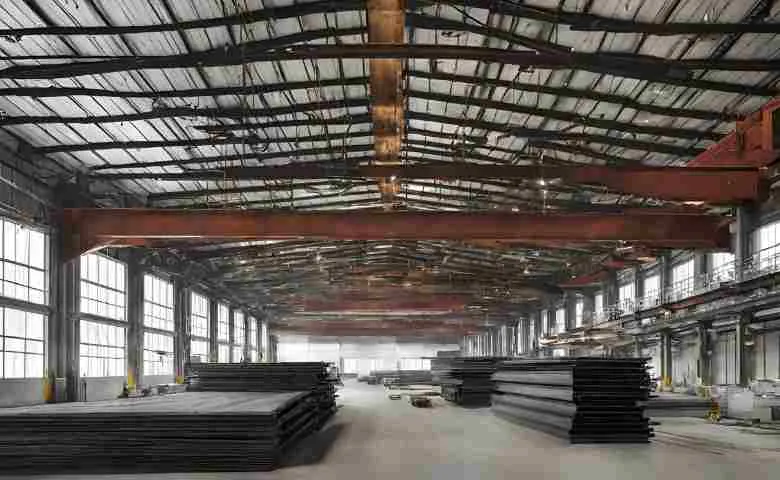Last Updated on April 4, 2024 by Admin
Mild steel, often referred to as low carbon steel, is the unsung hero of the industrial and construction world. While it might not have the exotic allure of stainless steel or the high-tensile strength of alloy steels, mild steel quietly forms the backbone of countless structures, machines, and everyday objects that we encounter in our daily lives. This unassuming material plays a pivotal role in industries ranging from construction to automotive, and its ubiquity is a testament to its versatility and reliability. In this article, we will delve into the fascinating world of mild steel, exploring its properties, production processes, and the diverse commercial applications that rely on it.
Table of Contents
Construction
The versatility of mild steel is evident in its wide range of commercial applications. It serves as the foundation for various industries, contributing to the construction of robust structures and the creation of essential components. Let’s explore some of the key areas where mild steel plays a vital role:
Mild steel is the cornerstone of construction, used in the fabrication of beams, columns, and reinforcing bars. It forms the skeletal framework of buildings, bridges, and skyscrapers, ensuring stability and durability.
Related Posts:
- The benefits of using structural steel in commercial construction
- The Environments Best Suited for Corrosion Protection
- Protecting Your RCC Structure: Understanding Corrosion Mechanisms, Prevention Techniques, and Repair Methods
- Higher Education Affordability Calculator for Fresh Engineering Graduates
- The Impacts of Inflation on Real Estate Industry
Automotive Sector
In the automotive sector, mild steel finds applications in vehicle chassis, body panels, and engine components. Its strength and formability make it an ideal choice for creating safe and reliable automobiles.
Mild steel is a go-to material for manufacturing machinery and equipment across various industries. From agricultural machinery to manufacturing equipment, its machinability and strength contribute to efficient and reliable machines.
Furniture and Appliance Industry
The furniture industry benefits from mild steel’s affordability and ease of fabrication. It is commonly used to create sturdy frames for furniture and as a structural component in appliances like refrigerators and washing machines.
Plumbing, HVAC, and Oil & Gas Industries
In the plumbing, HVAC, and oil and gas industries, mild steel pipes and tubing are widely used. Their durability and resistance to corrosion make them a reliable choice for transporting fluids and gases.
Maritime Industry
The maritime industry relies on mild steel for constructing ship hulls and various structural components. Its combination of strength and weldability ensures the integrity of vessels at sea.
Storage Tanks in Various Industries
Mild steel is a preferred material for constructing storage tanks for liquids and gases in industries such as petrochemicals, agriculture, and food processing. Properly coated mild steel tanks resist corrosion and maintain the integrity of their contents.
Railway Infrastructure
Railway tracks, bridges, and other railway infrastructure depend on mild steel for their durability and load-bearing capacity. It ensures the safety and efficiency of rail transportation.
Corrosion Resistance and Protective Measures
While mild steel offers a range of favorable properties, one notable drawback is its susceptibility to corrosion when exposed to moisture and oxygen. The iron in mild steel reacts with oxygen to form iron oxide, commonly known as rust, which can weaken the material and compromise its structural integrity. However, understanding this vulnerability has led to the development of various protective measures and strategies to enhance mild steel’s corrosion resistance, making it suitable for a broader range of commercial applications.
Conclusion
Mild steel may not always grab the headlines in the world of metals, but its significance in commercial applications cannot be overstated. Its unique blend of strength, ductility, weldability, and affordability makes it a staple in industries ranging from construction to automotive to manufacturing. As we continue to innovate and seek sustainable solutions in these sectors, mild steel will likely remain a fundamental material, quietly supporting progress and development on a global scale. It’s a testament to the enduring legacy of this unassuming metal that, even in an era of advanced materials, mild steel continues to be the backbone of our modern world.
Related Posts:
- The Evolution of Civil Engineering Consulting: From Design to Maintenance
- Why Learning Construction Software is Key to Building a Robust Career in Digital Construction in 2023
- Are Industrial CNC Mills The Future Of Modular Home Construction
- How Much Should You Pay Employees? A Basic Guide
- What is the Process of Tendering in Construction? [A Complete Guide]
- Various Types of Construction Materials Used In Building Construction
- Trends in Residential Construction: Exploring the Rise of Co-living, Micro-apartments, and Multi-generational Housing
- Top 21 Products For Work From Home and Learn From Home Life In 2023
- How to Develop Talent in Your Business: A Few Effective Tips and Tricks
- Why your Business could benefit from a Mezzanine floor
- Construction Mistakes To Avoid
- What Is Infrastructure Project Management?
- Sustainable Green Home: All you Need to Know
- Turning Old Homes Into Smart Homes
- Digital twin: the Age of Aquarius in Construction and Real Estate
- Free Online Civil Engineering Practice Test


